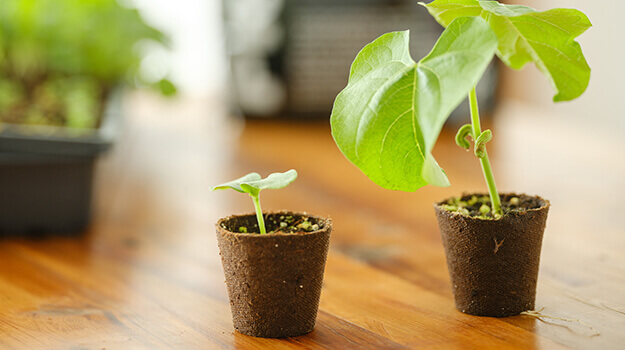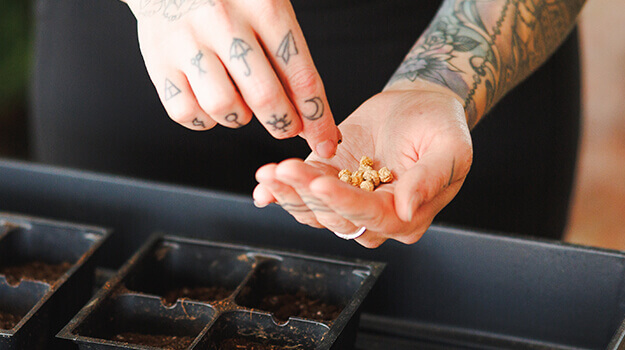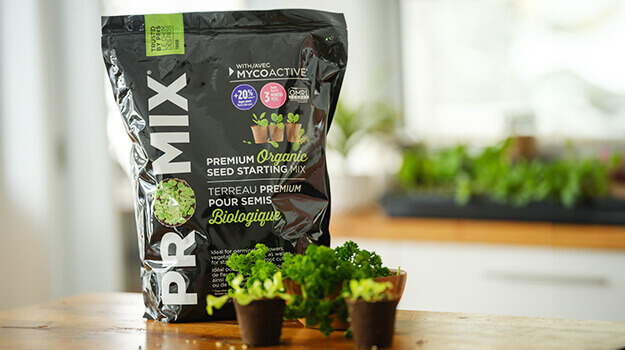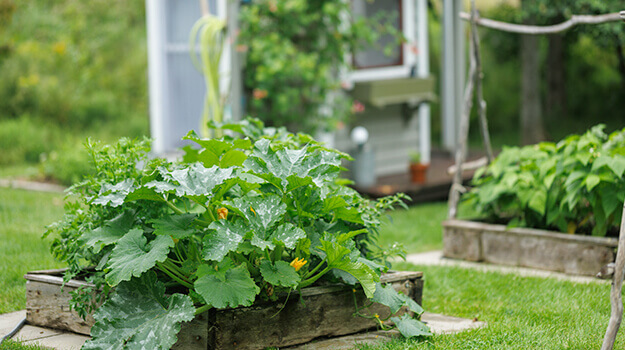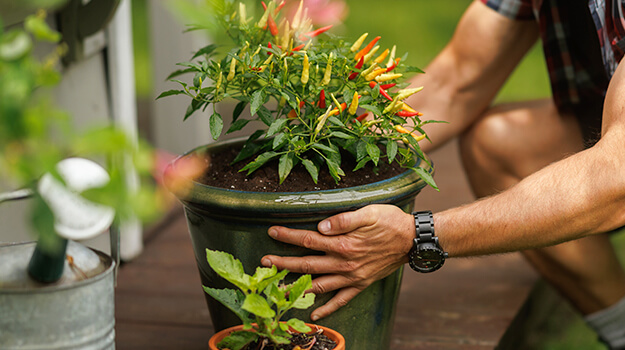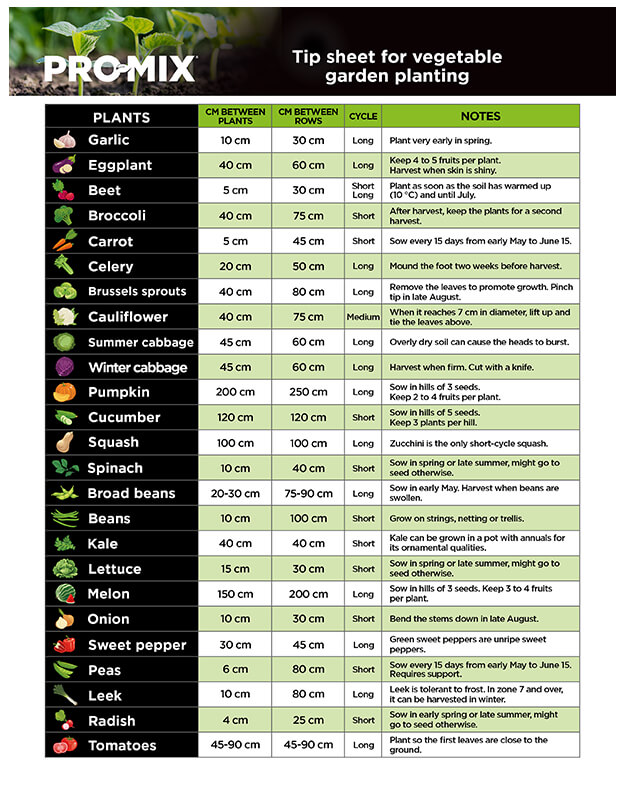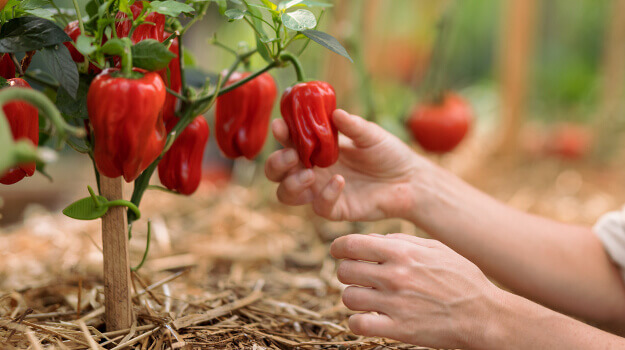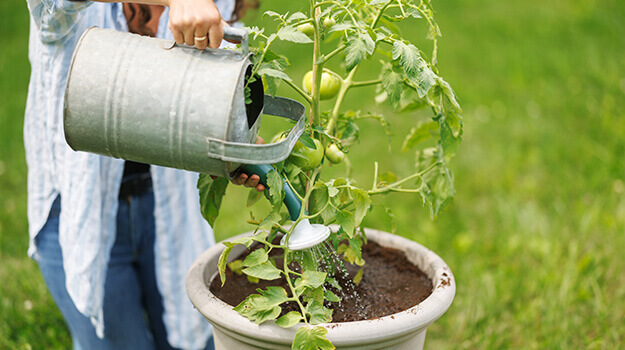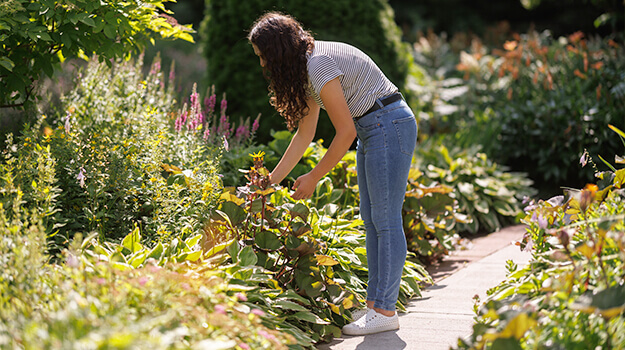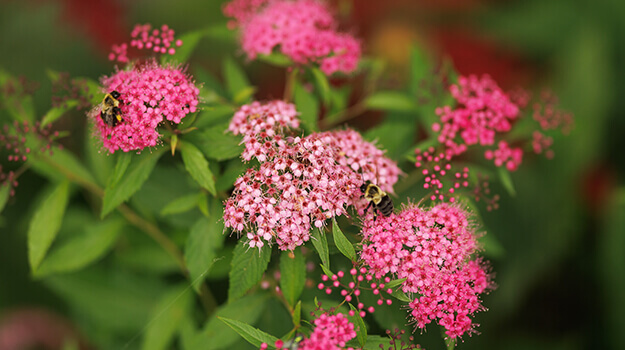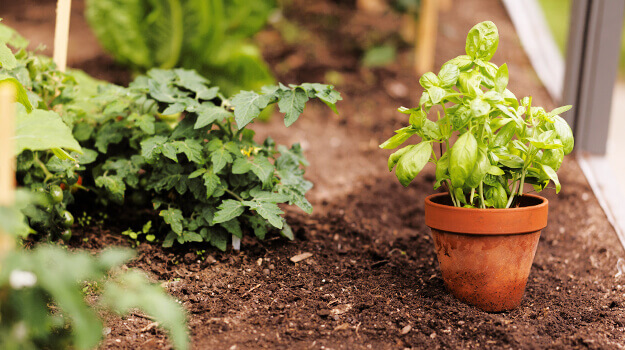Growing a vegetable garden can be an exhilarating experience. By knowing a few tips and tricks, it becomes doubly rewarding. Here's how to make the most of your space by growing more productive plants.
1. Start your vegetable garden from seeds
This is the most economical way (a packet of seeds often sells for the same price as a box of zucchinis!). When you have a large garden, more plants naturally equals more vegetables.
Most garden centres sell transplants that are healthy and ready to go once the last frost has passed in your region. But the varieties are limited to what greenhouse growers have selected.
Even if your space is smaller, starting a vegetable garden from seed is still an excellent idea. You will be able to choose from more varieties: organic, heirloom and hybrid seeds. Besides, it’s fun to pick through a seed catalogue in the middle of winter, because it entices you that spring is just around the corner.
2. Choose your seeds wisely
You need to look for vegetables that you enjoy eating for starters. But then, what kind of seed?
- Organic - If you like the idea of growing organically, look for varieties with an organic certification; they were developed without synthetic inputs. You can continue the organic growth cycle throughout the season with fertilizer and pesticide inputs that are certified for organic growing.
- Heirloom - You could consider heirloom varieties that maybe your grandparents planted. Most of the heirloom vegetables are classified as plants that have been cultivated for over 50 years. These seeds have been kept whole for some outstanding qualities, such as flavour and yield, or maybe resistance to pests or diseases. Heirloom vegetables have stood the test of time.
- Hybrids - These seeds come from cross-pollinating plants for the best characteristics of two or more different varieties. The hope is to develop a better plant, be it for yield, taste or disease resistance. This is part art and part science. In growth trials, hybrid test vegetables can end up being worst than the originals. It takes years until plant breeders can perfect and reproduce the same seed every time with the sought-after positive improvements. And it’s these well-proven seeds that are available.
By selecting plants adapted to your region, the expectation is that their fruits and vegetables reach maturity before the end of the season.
Here are the ten easiest plants to grow from seed according to the Home Garden Seed Association (HGSA): beans, cucumbers, lettuce, pumpkins, radishes, squash, peas, sunflowers, cosmos and zinnias.
Note on GMO seeds: Hybrids are not to be confused with GMO seeds (Genetically Modified Organisms). GMO seeds are created for commercial crops only. This involves merging DNA from combinations of plant, animal, bacterial and viral genes that cannot occur in nature or through cross-pollinating. There are no GMO garden seeds anywhere for sale.
3. Select a quality potting mix
Start your indoor crops in suitable potting mix to ensure your best success rate. Our PRO-MIX potting mixes are formulated with sphagnum peat moss, peat humus and coconut fibre to ensure ideal germination. They also contain natural, root-enhancing mycorrhizae and organic fertilizer to promote the healthy development of young shoots.
For the vegetable garden, the soil must be friable and rich in organic matter to provide plants with the nutrients necessary for their growth. It must retain water without accumulating it. Our organic soil offers your plants an ideal environment to flourish and guarantees an ideal harvest.
Topsoil in the vegetable garden is home to a wide range of beneficial organisms, bacteria, mycorrhizae and insects. In order not to disturb the precious life there, it is recommended not to work the soil too deeply.
TIP: Test the soil in your vegetable garden! It should hold its shape when squeezed, and crumble when dropped to the ground. If it crumbles as soon as you open your hand, then your soil is too sandy. If it stays in a ball once it falls to the ground, it has a lot of clay in it. Both sandy and clay soils will benefit from incorporating some compost into the top layer. It will make sandy soil retain water better or open up clay soils for air and water.
4. Don't have eyes bigger than your belly!
Better a small, well-designed and fruitful vegetable garden than a large vegetable garden that you have trouble maintaining.
Is your time limited? Go for a vegetable garden of a size that will allow you to maintain it without it becoming a chore. The experience will be pleasant, and you will want to repeat it… and possibly expand the cultivable space over time!
Reserve the space for the foods you want to eat rather than trying to recreate the traditional vegetable garden. This doesn’t stop you from dedicating a small space to experimentation and discovery!
5. Grow in containers
This is a great alternative when you only have a balcony, or the ground is difficult to work.
If you already have a vegetable garden, adding a few pots increases the growing area without requiring too much effort. This also allows you to grow close to annuals and herbs that attract pollinators.
Make sure your containers are big enough! In the spring, a tiny tomato plant can look funny in a 5-gallon pot. However, by mid-summer, its roots will have expanded enough to fill almost all the available space.
Larger containers contain both more water and nutrients. Any plants can thrive there and produce abundantly under 3 conditions:
- Choose a water-retaining potting soil that drains easily. Make sure your container has drainage holes to drain excess water.
- Use a good quality potting mix.
- Fertilize every two weeks with a soluble fertilizer.
To find out everything about growing a potted vegetable garden, read our article: The Best Vegetables to Grow in Containers
6. Respect the recommended space between plants
As soon as night temperatures are above 10 °C, several varieties of seeds can be sown directly in the vegetable garden. This is particularly the case for lettuce, beans, peas, root vegetables and various flowers. (To find out more, consult our sowing calendar)
The distances to be respected when planting are generally indicated on the seed packets. It is important to respect them. Contrary to what we would like to believe, planting more densely will not result in a more abundant harvest.
When seedlings are too close together, young shoots do not have enough space to deploy their leaves and roots. They compete for nutrients and struggle to find a place in the sun.
Thin your plants when they reach a height of two inches to give them the space they need to grow. This will also allow air to circulate and decrease the risk of fungal diseases.
7. Apply mulch
Mulch fulfills several functions in the vegetable garden. It helps control weeds and retains soil moisture. As it decomposes, it also improves its quality. Ideas for mulch: wood chips, compost, shredded straw, coco shells, plant refuse like fall leaves, and even newspaper or cardboard.
Apply mulch when plants reach a few inches tall. Leave a free space of at least 3 cm around the stem. Rather than risk suffocating your young plants under a thick layer of mulch, reapply it throughout the season.
8. Fertilize regularly
For the best harvest, apply fertilizer every 3 to 4 weeks when growing in the ground. In containers, fertilize every two weeks during the growing season.
Consider applying an organic-based garden fertilizer such as PRO-MIX Organic-Based Garden Fertilizer for Tomatoes, Vegetables and Fruits.
PLEASE NOTE: Tomatoes, cruciferous vegetables (broccoli, cauliflower, etc.), eggplants, squash and melons are heavy feeders!
9. Encourage biodiversity!
A diverse garden is a healthy garden. Plant beautiful varieties of vegetables, but also fruits, aromatic herbs and flowers in the vegetable garden or nearby.
You will attract the pollinators essential to the production of fruits and vegetables. You could also benefit from the presence of other beneficial insects which might hunt down unwanted ones.
10. Practice companion planting
Practicing companion planting could help plants to naturally defend themselves against certain attackers and to develop better.
This involves planting different plants side by side that are beneficial to each other. Some act as natural repellents to keep unwanted insects away, others could attract beneficial insects. Also note that some plants have difficulty coexisting since they compete for the same nutrients.
11. Attract pollinating insects
Plant flowers in the vegetable garden or nearby. Choose native species, which are more attractive and more appreciated by pollinators.
5 tips for making a pollinator garden:
- Choose plants that provide pollen and nectar.
- Offer a water source: a water garden, a birdbath or even a saucer containing a few pebbles. The bees will be able to land there and not drown when they come to drink.
- Select a sunny location sheltered from the wind. Your plants, just like the insects, will appreciate it!
- Ensure that flowering occurs continuously throughout the season.
- Do not use pesticides.
Pollinator favourites grown from seed: echinacea, milkweed, zinnia, monarda, oregano, rudbeckia Black-Eyed Susan, coriander, sunflowers, cosmos and alyssum. Other good collaborators that play a role near the vegetable garden: marigolds, nasturtiums and California poppies.
12. Carry out successive sowings
Successive sowing makes it possible to make the most of the garden space to bring your vegetable garden to its full potential, without all the harvest at once.
The method is simple. For indoor sowing, start some of the seeds in your starter pots, but not all at once. Then a few weeks later, another portion should be planted, and so on. For outdoor seed planting, do the same, plant a bit every few weeks.
Result: your first harvest will be followed by a second, and so on.
The number of crops achievable will obviously depend on the length of your gardening season. In any case, successive sowing allows the harvest to be spread out and the season to be extended. This avoids suddenly finding yourself with too many vegetables all at once and nothing afterwards.
For subsequent crops, select fast-growing vegetables and aromatic herbs that will reach maturity before the onset of cold weather. Beans and lettuce are particularly well suited to successive sowing since they can be planted and harvested until late in the season.


